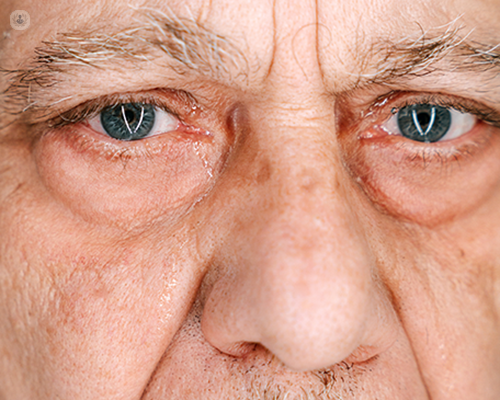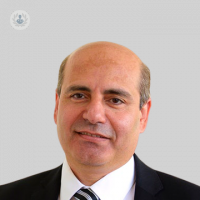No tears left to cry, is it dry eye disease?
Written by:Dry eye disease is a condition caused by the inability of the eye to lubricate itself. This can be caused by inadequate tear production or tears that dry up quicker than usual.
This article discusses the causes, symptoms, treatment, and management of the condition.

What causes dry eyes?
In recent years, there has been an increase in awareness of the condition and rising diagnostic rates. Between 15 to 33 per cent of the UK population aged 65 years or over have dry eye disease. The prevalence of dry eye disease increases with age by about 8 to 10 per cent per decade, but dry eye disease is not uncommon in younger people.
Some factors that make dry eye disease more likely include:
- refractive surgery
- contact lens wear (50 to 75 per cent of contact lens wearers report eye irritation associated with dry eye)
- digital device use which is currently very common in the younger population
Other causes of dry eyes are conditions such as:
- chronic blepharitis
- meibomian gland disease
- diabetes
- thyroid disorders
- Sjogren’s syndrome
- lupus
- scleroderma
- rheumatoid arthritis
- systemic diseases
Certain medications can decrease tear production and cause dry eyes such as:
- antihistamines
- beta-blockers
- oral contraceptives
- glaucoma drops
Hormonal changes in pregnancy or the menopause in females and androgen deficiency in males might trigger dry eye. Environmental conditions, such as exposure to low humidity, drying winds, high room temperature, air velocity, and pollution exacerbate dry eye symptoms.
Finally, women are more likely to suffer from dry eye disease than men. Postmenopausal oestrogen therapy, radiation therapy, hematopoietic stem cell transplantation (HSCT), dietary deficiencies, and hepatitis can all cause dry eye.
What are the symptoms of dry eyes?
Certainly, a drier eye is a frequent complaint of people with dry eye, but dry eye patients also experience a foreign-body sensation, grittiness, burning, and redness. Itching and a small amount of discharge, although normally associated with allergic conjunctivitis, can affect patients with dry eye disease.
If the basal rate of tears, tears that continuously moisten the eye, is inadequate, the reflexive tears engage. The reflexive tears occur due to pain or external stimulus, which could potentially lead to an overproduction of tears and subsequent watery eyes, secondary to dry eye.
How can I reduce dry eye symptoms?
Tips for people suffering from dry eye disease include:
- Reduce screen time.
- If looking at a screen for an extended period of time, make an effort to reset your eyes at regular intervals by blinking more frequently than usual.
- Use eye drops for dry eye disease.
- Be aware that certain medications can decrease tear production and the concurrent use of dry eye medication will be necessary.
- If wearing make-up, ensure that it is removed completely.
A balanced diet supplies the eyes with the vitamins and nutrients they need, but supplements can also help keep your eyes nourished:
- Omega-3 is an anti-inflammatory and necessary element for oil production in the meibomian gland.
- Vitamin D can improve the effectiveness of artificial tears on the eyes, helping to moisten them.
- Vitamin A helps protect the surface of the eye, and a deficiency can increase dry eyes.
- Zinc also plays a significant role in keeping the eyes healthy, as it is necessary for the correct absorption of Vitamin A in the body.
- Lutein and zeaxanthin are antioxidants that help keep cells healthy and functioning correctly.
Staying hydrated is also crucial.
What should I avoid with dry eye disease?
Tips include:
- Avoid dry environments, distancing yourself from indoor heating units, fans and air conditioners. Additionally, avoid driving with the window open.
- When possible, reduce screen time.
- Don’t overwear contacts, keep them clean, and never forget to take them out at night.
- Smoking cigarettes can aggravate the condition, as the smoke and fumes can dry out your eyes in addition to the toxic chemicals that can damage them.
- Avoid eye drops designed for red eyes.
- If you are using dry eye drops that aren’t working for you, don’t hesitate to change them. Some drops might work well for some people and not as well as for others.
What treatments are available for dry eye disease?
The first step in the treatment of dry eye is educating the patient about the condition, management, and prognosis. Modifying the patient’s local environment, identifying any potentially etiologic systemic/topical medications, practising proper lid hygiene, applying warm compresses, and applying ocular lubricants are all important in the treatment of dry eye disease.
The second step is the use of non-preserved ocular lubricants to minimise preservative-induced toxicity, tear conservation therapy such as punctual occlusion or moisture chamber spectacles/goggles, overnight treatments like ointment or moisture chamber, physical heating, and expression of the meibomian glands.
Earlier diagnosis and treatment of dry eye could significantly improve the quality of life, but unfortunately, there is no one-size-fits-all treatment. Other than eye lubrication, several different options are available for the relief of dry eye symptoms, but no one option is universally effective.
For cases of mild dry eye disease, they can be treated with eye drops up to four times a day, but in more severe cases, the use of drops can increase up to 10 to 12 times a day.
Thick artificial teardrops, or gels used in more severe cases and ointments may be used at night, rarely during the day. Topical steroids can help temporarily calm inflammation. Topical immunomodulators, such as cyclosporine addresses the role of the immune response in the cycle of dry eye. Punctual plugs are successful treatments for some types of dry eye disease also.


